Behind the Scenes of The Immortal Life of Henrietta Lacks
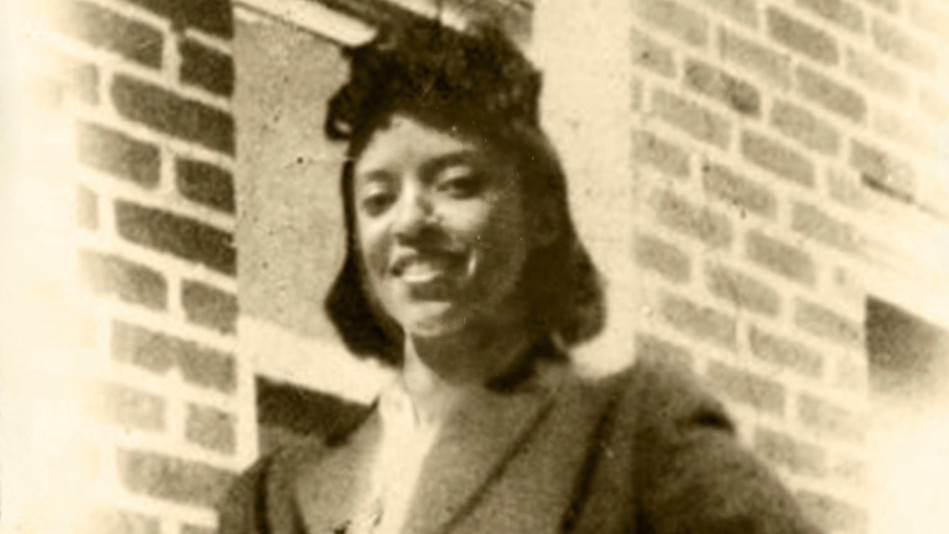
Photo: Courtesy of the Lacks Family
Seven years ago, Oprah was deeply moved by the astonishing book The Immortal Life of Henrietta Lacks, the true account of a single patient who unwittingly transformed modern medicine. Now she’s starring in the HBO adaptation (out April 22) alongside Rose Byrne. A look at one woman’s journey from ordinary to legendary.
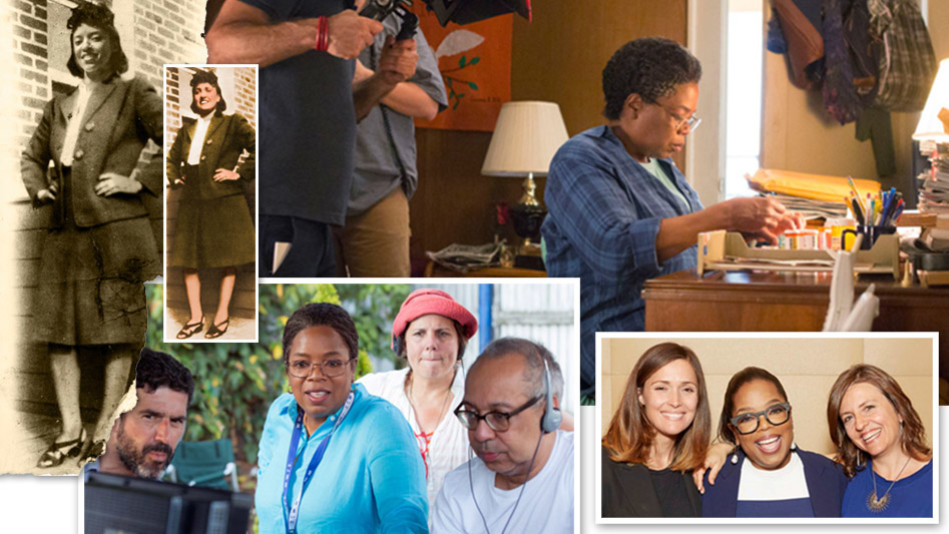
Clockwise from top left: Renée Elise Goldsberry re-creates a moment captured in a rare photograph of Henrietta. Oprah as Deborah in her home. “This story is deep and wide,” Oprah says. “But I tried to stay in the center of it—in the heart of a daughter who is frustrated, manic, depressed, working multiple jobs, and wanting to know who her mother was.” Costars Rose Byrne (left) and Oprah with Rebecca Skloot, author of The Immortal Life of Henrietta Lacks, in Baltimore. “Rose was wonderful to work with,” says Oprah. “And I give Rebecca a lot of credit for her relentless pursuit of what happened to Henrietta. She had the door slammed in her face many times.” Oprah between scenes with director of photography Sofian El Fani (left), executive producer Lydia Dean Pilcher, and director and writer George C. Wolfe while filming outside Atlanta.
There was a time when scientists could only dream of growing human cells outside the body. They had a name for their dream: an immortal cell line, a forever-multiplying supply that would let them experiment with new vaccines and drug therapies they’d never be allowed to test on people. For decades, researchers tried and failed to find a solution—until a miracle occurred. She had a name, too: Henrietta Lacks.
When Lacks, a young black mother of five living in Baltimore, went to the Johns Hopkins Hospital in 1951 to be treated for cervical cancer, doctors removed slices of tissue from her cervix. To their amazement, the uncommonly resilient cells, which they labeled HeLa, kept reproducing. But no one had asked Lacks, or her family, for permission to remove the sample. Lacks died eight months after her first treatment, never knowing that her cells would change the course of medical history.
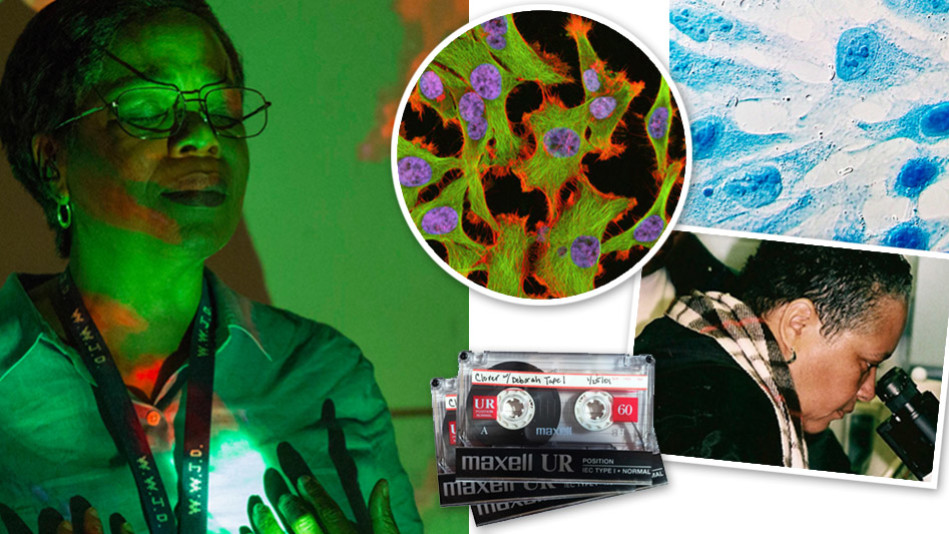
Clockwise from left: Oprah as Deborah in front of a projection of Henrietta’s cells at Johns Hopkins. “This moment is about love,” says Oprah. HeLa cells stained with fluorescent dye. HeLa cervical cells stained with blue dye. Deborah and her brother Zakariyya Rahman first see their mom’s cells through a microscope in 2001. A few of Skloot’s tapes. “I couldn’t get Deborah’s voice, which was very high- pitched,” says Oprah, “so I worked on picking up her cadence and rhythms.”
Published in 2010, science writer Rebecca Skloot’s The Immortal Life of Henrietta Lacks not only pieces together Lacks’s life and legacy, but also depicts the confusion and betrayal her children experienced when they learned, in 1973, after decades spent out of the loop, that a part of their mother lived on. Skloot spent 11 years researching and writing the book, which makes its screen debut on April 22 in an HBO film featuring Oprah as Lacks’s devoted daughter Deborah. As ferociously driven as Skloot (played by Rose Byrne), Deborah wanted to unearth every detail about her mom, who died when Deborah wasn’t yet 2 years old. “Nobody talked about Henrietta after she was gone,” Oprah says. “There’s even a line where one of the aunts goes, ‘We don’t speak of the dead.’ So for me, it’s a story about a daughter’s search for her mother—and through that search, she develops her own identity.”
Henrietta Lacks also resonated for more personal reasons. “I lived in Baltimore for eight years,” Oprah says. “In all my experiences of community and media work there, I never once heard Henrietta’s name. I wanted to bring this story to light so people could know who she was.” Initially, being in front of the camera wasn’t part of her vision, Oprah says, but one of Skloot’s taped conversations with Deborah, who died mere months before the book release, compelled her to take the leap of faith. “Rebecca had many recordings of Deborah,” says Oprah, “and in one of them, she actually says she wants me to play her. That’s when I first considered it. The film is my way of honoring her persistence—of telling her, ‘Girl, we did it.’”
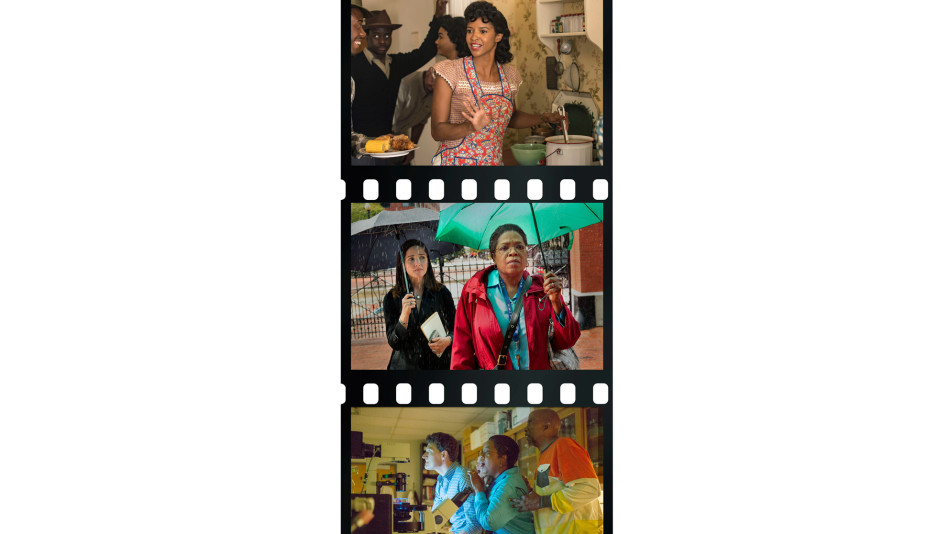
From top: Henrietta (Goldsberry) throws a party; Rebecca (Byrne) and Deborah (Oprah) prepare to enter the Johns Hopkins Hospital; researcher Christoph Lengauer (Gabriel Ebert) shows Henrietta’s cells to Deborah and her brother Zakariyya (Reg E. Cathey).
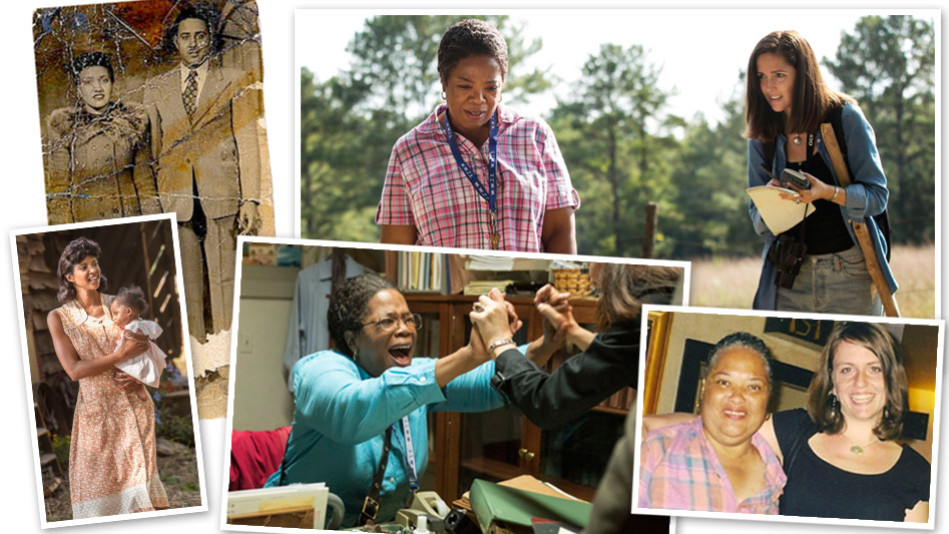
Clockwise from top left: Henrietta with her husband, David, circa 1945. Deborah (Oprah) and Rebecca (Byrne) visit the Lacks family grave site in Clover, Virginia. “Rebecca coming into Deborah’s life gave her hope,” says Oprah, “because she’d found her equal partner.” The real-life Deborah and Rebecca at the Hard Rock Cafe in Baltimore, 2000. Says Rebecca, “It’s the only picture I have of us.” Deborah (Oprah) and Rebecca (Byrne) find the hospital records they’ve been searching for. Henrietta (Goldsberry) holds a young Deborah.
Photo Credit (from top): Set images: Quantrell D. Colbert/HBO (5). Lacks in Movie: HBO. Historic Lacks: Courtesy of the Lacks Family. Oprah, Bryne and Skloot: courtesy of Rebecca Skloot.
Set images: Quantrell D. Colbert/HBO (5). Lacks couple: Courtesy of the Lacks Family. Rebecca and Deborah, Deborah in lab, and tapes: Courtesy of Rebecca Skloot (3). Cells: Thomas J. Deerinck. HeLa cells: Getty Images.
Want more stories like this delivered to your inbox? Sign up for the Oprah.com Spirit Newsletter!

Clockwise from top left: Renée Elise Goldsberry re-creates a moment captured in a rare photograph of Henrietta. Oprah as Deborah in her home. “This story is deep and wide,” Oprah says. “But I tried to stay in the center of it—in the heart of a daughter who is frustrated, manic, depressed, working multiple jobs, and wanting to know who her mother was.” Costars Rose Byrne (left) and Oprah with Rebecca Skloot, author of The Immortal Life of Henrietta Lacks, in Baltimore. “Rose was wonderful to work with,” says Oprah. “And I give Rebecca a lot of credit for her relentless pursuit of what happened to Henrietta. She had the door slammed in her face many times.” Oprah between scenes with director of photography Sofian El Fani (left), executive producer Lydia Dean Pilcher, and director and writer George C. Wolfe while filming outside Atlanta.
There was a time when scientists could only dream of growing human cells outside the body. They had a name for their dream: an immortal cell line, a forever-multiplying supply that would let them experiment with new vaccines and drug therapies they’d never be allowed to test on people. For decades, researchers tried and failed to find a solution—until a miracle occurred. She had a name, too: Henrietta Lacks.
When Lacks, a young black mother of five living in Baltimore, went to the Johns Hopkins Hospital in 1951 to be treated for cervical cancer, doctors removed slices of tissue from her cervix. To their amazement, the uncommonly resilient cells, which they labeled HeLa, kept reproducing. But no one had asked Lacks, or her family, for permission to remove the sample. Lacks died eight months after her first treatment, never knowing that her cells would change the course of medical history.

Clockwise from left: Oprah as Deborah in front of a projection of Henrietta’s cells at Johns Hopkins. “This moment is about love,” says Oprah. HeLa cells stained with fluorescent dye. HeLa cervical cells stained with blue dye. Deborah and her brother Zakariyya Rahman first see their mom’s cells through a microscope in 2001. A few of Skloot’s tapes. “I couldn’t get Deborah’s voice, which was very high- pitched,” says Oprah, “so I worked on picking up her cadence and rhythms.”
Published in 2010, science writer Rebecca Skloot’s The Immortal Life of Henrietta Lacks not only pieces together Lacks’s life and legacy, but also depicts the confusion and betrayal her children experienced when they learned, in 1973, after decades spent out of the loop, that a part of their mother lived on. Skloot spent 11 years researching and writing the book, which makes its screen debut on April 22 in an HBO film featuring Oprah as Lacks’s devoted daughter Deborah. As ferociously driven as Skloot (played by Rose Byrne), Deborah wanted to unearth every detail about her mom, who died when Deborah wasn’t yet 2 years old. “Nobody talked about Henrietta after she was gone,” Oprah says. “There’s even a line where one of the aunts goes, ‘We don’t speak of the dead.’ So for me, it’s a story about a daughter’s search for her mother—and through that search, she develops her own identity.”
Henrietta Lacks also resonated for more personal reasons. “I lived in Baltimore for eight years,” Oprah says. “In all my experiences of community and media work there, I never once heard Henrietta’s name. I wanted to bring this story to light so people could know who she was.” Initially, being in front of the camera wasn’t part of her vision, Oprah says, but one of Skloot’s taped conversations with Deborah, who died mere months before the book release, compelled her to take the leap of faith. “Rebecca had many recordings of Deborah,” says Oprah, “and in one of them, she actually says she wants me to play her. That’s when I first considered it. The film is my way of honoring her persistence—of telling her, ‘Girl, we did it.’”

From top: Henrietta (Goldsberry) throws a party; Rebecca (Byrne) and Deborah (Oprah) prepare to enter the Johns Hopkins Hospital; researcher Christoph Lengauer (Gabriel Ebert) shows Henrietta’s cells to Deborah and her brother Zakariyya (Reg E. Cathey).

Clockwise from top left: Henrietta with her husband, David, circa 1945. Deborah (Oprah) and Rebecca (Byrne) visit the Lacks family grave site in Clover, Virginia. “Rebecca coming into Deborah’s life gave her hope,” says Oprah, “because she’d found her equal partner.” The real-life Deborah and Rebecca at the Hard Rock Cafe in Baltimore, 2000. Says Rebecca, “It’s the only picture I have of us.” Deborah (Oprah) and Rebecca (Byrne) find the hospital records they’ve been searching for. Henrietta (Goldsberry) holds a young Deborah.
Photo Credit (from top): Set images: Quantrell D. Colbert/HBO (5). Lacks in Movie: HBO. Historic Lacks: Courtesy of the Lacks Family. Oprah, Bryne and Skloot: courtesy of Rebecca Skloot.
Set images: Quantrell D. Colbert/HBO (5). Lacks couple: Courtesy of the Lacks Family. Rebecca and Deborah, Deborah in lab, and tapes: Courtesy of Rebecca Skloot (3). Cells: Thomas J. Deerinck. HeLa cells: Getty Images.
Want more stories like this delivered to your inbox? Sign up for the Oprah.com Spirit Newsletter!



